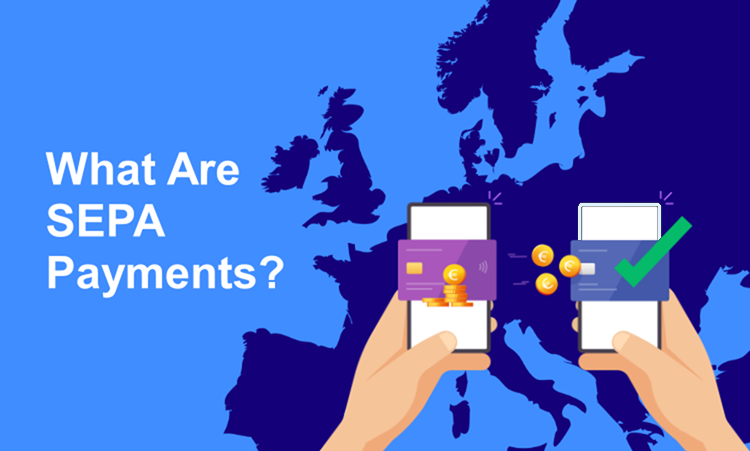Ecommerce merchants seek payment solutions that cater to their customers' needs for safe and quick payments. Monetary regulatory initiatives, such as SEPA, allow people and businesses to transfer money as quickly and cost-efficient as possible.
Find out what SEPA is, how it works, and whether it benefits ecommerce merchants and their clients.
Note: The information provided is based on readily available data at the time of writing this article (March 2022) and is subject to change.
What Is SEPA?

SEPA is a cashless-payment framework created by the European Union. Its purpose is to regulate and provide an efficient, cost-effective payment system across the eurozone and other participating countries. To consumers and businesses operating in the EU, SEPA provides safe cross-border payments in Euros at the cost of domestic payments.
Since SEPA eliminated the differences between cross-border and domestic payments, it simplified selling goods and services across the EU and EEA.
How Do SEPA Payments Work?
To initiate a SEPA payment, the payee provides the following information:
- The payer’s bank account information (IBAN code and occasionally the BIC code).
- The payment amount.
- An SDD Mandate (a payment authorization agreement).
The payer receives the payment request, after which they must sign the mandate and agree to the proposed transaction to complete it.
Banks cannot make deductions from the transferred amount but are allowed to charge transfer fees only if they are charged uniformly to all members of the European Economic Area (EEA).
While this explains how SEPA payments work in general, there are slight variations between the four SEPA payment processing schemes (SEPA Credit Transfer Scheme, SEPA Instant Credit Transfer Scheme, SEPA Core Direct Debit Scheme, and SEPA Direct Debit Business-to-Business Scheme).
SEPA Credit Transfers
SEPA Credit Transfers are typically used for one-time transfers. To perform a standard SEPA Credit Transfer, both the payer and the payee must provide their IBAN code (in some cases, their BIC code as well) and sign an authorization agreement. Once the transfer is authorized, the payee receives the funds they requested within one business day, dependent on the time the request was made.
The following limitations apply to SEPA Credit Transfers:
- The maximum transfer limit for SEPA Credit Transfers is one cent short of one billion euros (999,999,999.99 EUR).
- Payers have 13 months to request a recall of a SEPA Credit Transfer in the case of incorrect information about the payee or the payment amount.
SEPA Instant Credit Transfers
The SEPA Instant Credit Transfers allow quick transfer processing (within 10 seconds) because of direct routing between participating parties’ banks, which means no intermediaries are involved.
Banks of both parties who want to perform a SEPA Instant Credit Transfer must be registered SEPA Instant members. The SEPA Instant Credit Transfer system is unavailable in some SEPA states. Parties planning to make SEPA Instant Transfers must ensure their banks are one of 2336 payment service providers in 26 countries that can complete such a transaction.
The maximum amount of money that can be transferred via a single SEPA Instant Credit Transfer is 100,000 EUR.
Note: Banks are allowed to impose a lower maximum transfer limit. Before initiating any SEPA Instant Credit Transfer, contact your bank to inquire about transfer limits.
Ecommerce benefits from SEPA instant transfers because they:
- Enable real-time payments (which allows merchants to process orders and ship products faster)
- Are available 24/7, 365 days a year
SEPA Core Direct Debit Transfers
SEPA Core Direct Debit transfers are intended for individuals. The difference between SEPA Direct Debits and SEPA Credit Transfers is that the recipient of the funds must request the transfer from the sender. The recipient asks for authorization for the withdrawal of funds from the sender’s account. After that, the sender signs a mandate that authorizes that transfer and/or any future recurring payments.
SEPA Direct Debit Transfers are typically used for recurring transactions because the sender doesn’t have to authorize every recurring transaction separately. This type of SEPA transfer can also be used, albeit less commonly, for one-time payments.
As opposed to SEPA Credit Transfers, SEPA Direct Debit Transfers have no fixed limit, however, the parties participating in such transfers have the option to set one.
SEPA Direct Debit B2B Transfers
SEPA Direct Debit B2B transfers are available to businesses only. SEPA-participating payment service providers have the option to offer this service to their clients but aren’t obliged to.
SEPA Direct Debit B2B transfers have more strict terms than standard Core Direct Debit Transfers. The characteristics of Direct Debit B2B transfers are:
- Every transaction, recurring or not, must be verified and authorized, which is done by comparing information from the recipient’s request with what’s written on the sender’s mandate. Both the recipient and sender must agree on this process beforehand.
- The debtor is not entitled to a refund of an unauthorized transaction.

A Brief History of SEPA
- 1st of January 1999. The euro was launched and represents the first step towards European payments integration. For three years, the currency was used for electronic payments and accounting only.
- PSD in 2007. The European Union passed the Payment Services Directive (PSD) which will become the legal framework for SEPA in 2008. PSD is particularly important for SEPA Direct Debits because it specifies the conditions necessary to authorize such a transfer, as well as the refund procedure.
- SEPA Credit Transfers became operational on January 28th 2008. Businesses and individuals with bank accounts in SEPA participating countries can enjoy both domestic and cross-border credit transfers at the cost of domestic transfers.
- SEPA Direct Debit Core and Direct Debit B2B introduced in November 2009. SEPA Direct Debit Core and Direct Debit B2B provide a secure way for businesses and individuals to perform recurring transactions between banks in SEPA-participating countries.
- Over 80% of transactions are SEPA-Compliant by 2014. Most stakeholders in the euro area become SEPA-compliant, which means that over 80% of all transactions generated by banks in the euro area are SEPA compliant.
- SEPA Instant Credit Transfers become operational in 2017. SEPA Instant Credit Transfers allow users to perform real-time payments.
The future goals of the European Payments Council include harmonizing modern payment solutions (online and mobile) and integrating the entire European payment system.
What Countries Are Part of SEPA?
36 European countries are participating in the SEPA program.
- All (27) European Union (EU) member states.
- 3 European Economic Area (EEA) member states (Iceland, Liechtenstein, and Norway).
- 6 non-EEA states that have monetary arrangements with the EU (Switzerland, the United Kingdom, Vatican, San Marino, Monaco, and Andorra).
How Long Do SEPA Payments Take?
Payment processing time depends on the type of SEPA transfer. Instant credit transfers take the least time to process while other SEPA credit transfers take at least one business day.

| SEPA Payment Processing Scheme | Processing Time |
|---|---|
| Credit Transfer | One business day. |
| Instant Credit Transfer | Less than ten seconds. |
| Core Direct Debit Transfer | A minimum of two business days. |
| Direct Debit Business-to-Business | A minimum of three business days. |
Advantages and Disadvantages of SEPA in Ecommerce
Ecommerce merchants can offer their customers the option to pay via SEPA Credit Transfer or SEPA Direct Debit but should approach that decision carefully because of the following advantages and disadvantages.
Advantages
SEPA allows ecommerce merchants to:
- Enjoy quick and cost-efficient transaction processing in the EEA.
- Automate exception handling.
- Collect automatic payments on a specified schedule.
Disadvantages
Ecommerce merchants could suffer losses by offering SEPA to their customers because of the following reasons:
- Chargebacks are processed up to 13 months from the date the transaction took place, which increases the risk of friendly fraud (i.e., the customer receives the product but claim they didn’t and request a chargeback).
- SEPA is an asynchronous payment method, meaning that the payee doesn’t have insight into the availability of requested funds. This allows the payer to skip payments.
Fortunately, there are workarounds around these disadvantages. Merchants who have experienced fraud should consider offering low-cost and low-risk products to low-risk customers to avoid significant profit losses. Nowadays, banks offer various services that prevent the payer from skipping payments, making SEPA transactions more secure for merchants.
Conclusion
The speed and affordability of SEPA payment methods make them indispensable tools for European payments. Ecommerce merchants recognize this, so it comes to no wonder that SEPA payment methods are widely used in this industry.
The information in this article aims to inform ecommerce merchants about SEPA and help them decide whether to implement it in their business.
SEPA isn’t the only monetary regulatory initiative, for example, the Automated Clearing House (ACH) is the US equivalent to SEPA.
Learn more about the differences between ACH and SEPA and how to accept ACH payments.
